Report of the Third Symposium upon John La Farge "Dogma and Tolerance-Christianity and Buddhism in 19th-Century Boston"
07.01.2020
The third symposium about John La Farge was held on 21st December. This time the topic was the spirituality of the so-called Boston Brahmins, who were the elite in the early history of Boston, with whom John La Farge had a close connection with them. The focus was on Ernest Fenollosa, William Sturgis Bigelow and Percival Lowell. They spent time in Japan in the early Meiji period and played an important role in the cultural relations between Japan and the USA. Their “playground” was Harvard University, whose spirituality was Unitarian, with a chapel dedicated to Emanuel Swedenborg(1688-1772) and a hall dedicated to the Transcendentalist Emerson(1803-1882).
In an introductory lecture, Michitaka Suzuki showed that John La Farge made stained glass for churches of different denominations, including Episcopal, Baptist, Congregational, Catholic and Unitarian. But he also was sympathetic to polytheistic Shinto and agnostic Buddhist sensibility. According to Nobukuni Koyasu, Motoori Norinaga, the most important theologian in Edo Japan, maintained that Shinto itself was monotheistic, as it had the concept of an ultimate ineffable Deity. According to Akira Yamada, who was an authority on Thomas Aquinas, Roman Stoic religion too was monotheistic, as the oculus on the summit of the Roman Pantheon was over the many deities on the walls. Therefore it is possible to say that monotheism of the Old Testament has the same Deity as the Deity of the Shinto and Stoic Roman religions. But the New Testament conception of the Incarnation differs from Buddhist Honji-Suijaku, as according to the Chalcedon Council (451) the incarnated god is a real human being, while Honji-Suijaku regards the materialization of the invisible Buddha as an expedient and thus as of secondary importance.
Then David Eckel introduced the urban legend that Ernest Fenollosa, “one of Boston’s most famous Buddhists”, is said to be the model for the statue of Jesus Christ with his hand placed on the seated figure of the most famous Boston preacher, Phillip Brooks, in the Brooks monument beside Trinity Church in Boston. Eckel’s view is that the Hegelian dialectical opposition of Buddhism and Christianity to which Herbert Spencer and Fenollosa subscribed was already then obsolete: rather, they have a common message.
Roger Warner, a relative of the Bigelow family, interpreted Bigelow’s visit to Japan as initially an escape from Boston society. But after he received the Buddhist precepts and became a Buddhist, Bigelow returned to the USA as a Bostonian and had a Christian funeral However the donation of all his collection of Japanese art to the Boston Museum of Fine Arts could be interpreted as doing good deeds in order to obtain Buddhist salvation.
Carol Bundy, a member of the Lowell family, said that for Lowell, the East including Korea is a mirror for the West. Lowell undertook an extensive walk through mountains and provinces as far as Noto, seeking to find a world view grounded on some form of providence, as an alternative to Darwin’s theory of evolution. But on Mt. Ontake Lowell saw monks in a state of spiritual trance and began to learn about Shinto religion. He wrote that self-denial is the moving force in the Buddhist experience and interpreted Japan and Korea as surpassing the material world. Eventually he widened his view of another world to Mars and anticipated the existence of Pluto on his Mars Hill in Arizona.
After these lectures, there was a lively discussion with the audience, for example about the relation between Shinto sensibility and modern Shinto as an ideology for modernization, and about the (purported) homosexual inclinations of Bigelow. The discussion was inclusive and sympathetic. One felt that the Boston Brahmins of the early Meiji era Japan were revived here in the discussion hall.
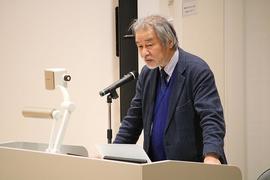 |
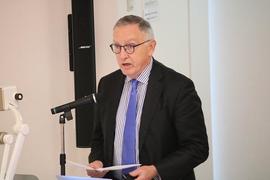 |
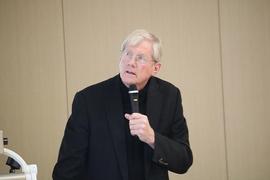 |
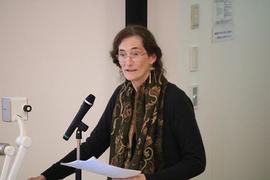 |
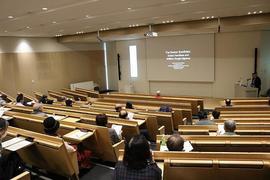 |
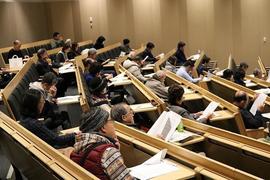 |
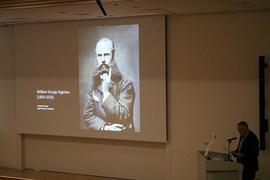 |
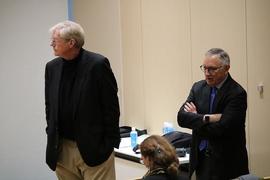 |
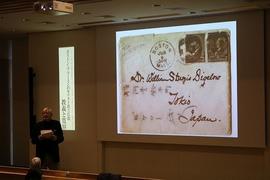 |
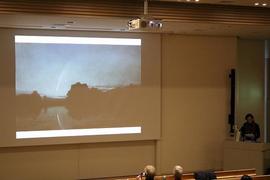 |